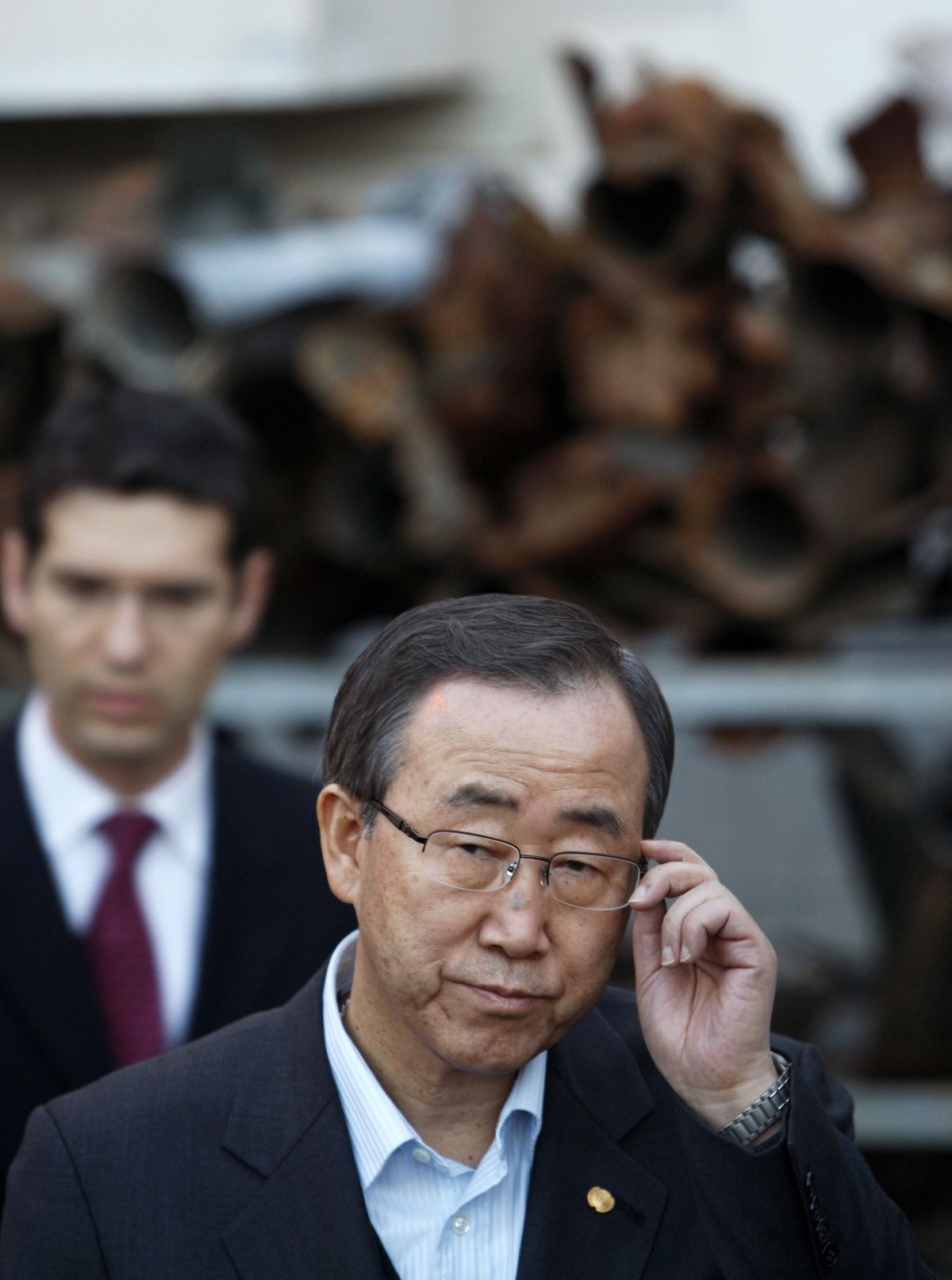U.N. secretary-general tours damage in Gaza, Israel

GAZA CITY, Gaza Strip – As residents of the Gaza Strip continued to sift through the rubble and mourn their dead, United Nations Secretary General Ban Ki-moon toured the seaside Palestinian enclave Tuesday and declared himself “deeply grieved by what I have seen today.”
Ban entered Gaza from Israel in a convoy of armored vehicles. Speaking to reporters in front of the smoldering remains of a United Nations food warehouse set ablaze last week by an Israeli tank shell, a somber Ban said he had witnessed “heartbreaking” scenes of destruction.
“I have seen only a fraction of the damage,” he said. “This is shocking and alarming.”
Ban later visited the southern Israeli town of Sderot, long a target for rockets fired by Palestinian militants from Gaza. Ban called the ongoing rocket attacks against Israeli residents “appalling and unacceptable.” Israeli tanks and soldiers continued their withdrawal from Gaza on Tuesday, signaling an end to the devastating 22-day campaign against the Palestinian militant group Hamas, which seized control of Gaza from the rival Fatah faction in mid-2007.
Israeli officials had expressed a desire to be out of Gaza by the time Barack Obama was sworn in as U.S. president, but it was unclear whether all Israeli forces had officially left ahead of the self-imposed deadline.
Normal life continued to return Tuesday in Gaza. Stores around Gaza City’s Palestine Square were bustling with customers. However, much of the northern third of the territory, which witnessed the heaviest fighting and airstrikes, was still without consistent water and electricity. Some neighborhoods have been without power or running water for more than three weeks.
More than 1,300 Palestinians were killed and more than 5,000 wounded during the Israeli assault, according to local medical officials.
The United Nations Relief and Works Agency said at least $330 million in emergency funding would be required simply to meet the most immediate needs on the ground.